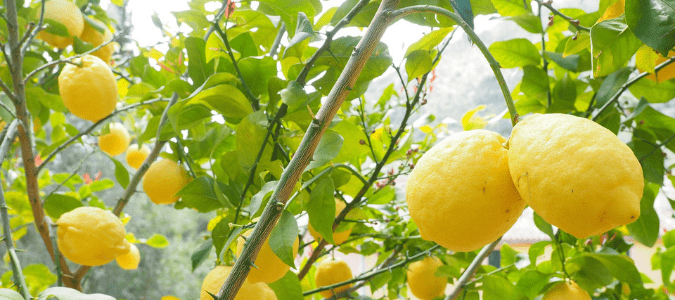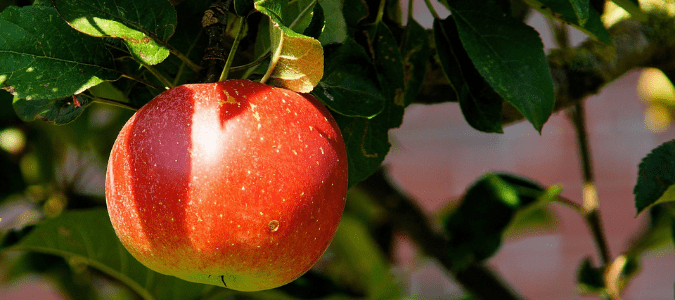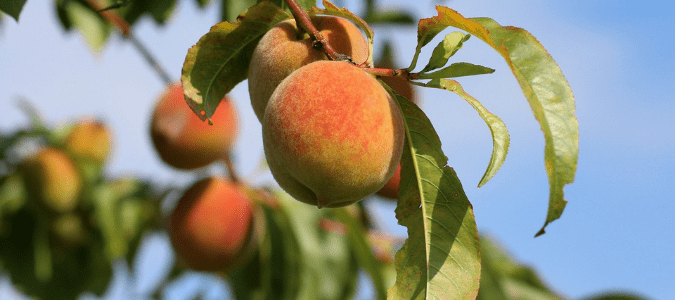When fruit trees are well cared for, they can make a gorgeous addition to your yard. Fruit trees also bring pleasure year after year as they bear flowers followed by delicious fruits. If they aren’t cared for in the right ways and at the right times, however, they can have trouble growing fruit. They might even wind up looking scraggly and stunted after a few short years. Fortunately, pruning fruit trees is easy enough to do yourself, as long as you have the time, tools and knowledge needed to do it right.
Pruning fruit trees increases both sunlight and air flow among the tree’s strongest and healthiest branches. This extra sunlight and air flow stimulates their growth. If you’ve planted a young fruit tree, expect to prune pretty aggressively for several years to stimulate growth. Don’t expect the tree to bear fruit for the first few years. Just concentrate on pruning it each year to create the right shape and encourage the growth of strong, healthy branches.
There are two main methods for pruning fruit trees: the central leader system and the open center system. Both of these methods work best when they’re started soon after planting a young fruit tree. And, both methods will lead to healthier trees that bear larger fruit over time.
The main, visible difference between these two pruning methods is the resulting tree shape that each one creates. But, which method you choose isn’t just an aesthetic choice. It depends on which type of fruit trees you have, too. Some fruit trees are better suited for the central leader system while others are better suited for the open center system.
Now let’s take a closer look at these two systems for pruning fruit trees, and learn about the steps involved for each one.
The first step for both the central leader system and the open center system is to prune the top of the tree back by about a third as soon as you plant it in your yard. When fruit trees are dug up from the orchard or nursery and then replanted in a garden, their root systems are disturbed. Pruning them back by a third after replanting helps their roots recover faster.
The Central Leader System
The central leader system creates a more traditional look. It has a thick trunk extending upward in the center that has smaller branches sprouting off of it. This pruning system works best for apple, pear and cherry trees. These types of fruit trees have narrower crotch angles where the branches meet the trunk. These angles aren’t as well suited for pruning with the open center system.
To pru e your fruit trees using the central leader system, you’ll let the tree’s central, main trunk grow. All the while, selectively cultivating the smaller branches that lead off of it. As the tree grows over time, prune the smaller branches so that the ones that are left are between eight inches and two feet apart. And, be sure they are balanced with each other around the main trunk. Of course, if your tree is young when you start using this pruning system, the branches will be closer together at first. Then, the spacing between them will increase as the tree grows.
The Open Center System
The open center system creates a more ornamental look than the central leader system. This system has a central lower trunk that gives way to evenly spaced branches sprouting outward in something of a basket or vase shape. There’s no main center trunk in the tree’s canopy. This pruning system typically works best with apricot, peach, nectarine, plum, prune and persimmon trees, since the crotch angles where their branches meet the trunk are wider.
The open center system involves pruning back the tree’s main, central trunk starting when it is a very young, slender tree. Then, selectively pruning or preserving its other branches so there is an even spacing of smaller branches spreading out from the main trunk. Together, these branches create a basket or vase shape, with no central trunk in their midst.
Anytime you prune your fruit trees, it’s important to preserve the stronger branches that can bear more fruit. Aim to prune away any dead limbs as well as the smaller, lower branches that make up the understory—the branches that won’t get as much light when the larger, upper branches leaf out in spring. These steps will take stress off the tree, help the more developed branches get the most light and sun, and generally help the tree thrive.
It can feel overwhelming to try to learn about pruning fruit trees. If choosing the best pruning system feels confusing or like a lot of work, you can hire a certified arborist to handle all your tree pruning and fruit tree care needs. An experienced tree professional will know the right techniques for keeping your trees at their healthiest and most beautiful, thriving best.
When to Prune Fruit Trees
Knowing when to prune fruit trees is an important aspect of caring for these valuable assets to your property. Pruning fruit trees not only makes them more beautiful, increasing the curb appeal of your home and property, it also actually helps them bear more and bigger fruit. When fruit tree branches are not pruned and therefore too crowded, the branches don’t get as much light and air flow as they would if they were carefully spaced and cultivated. Thus, the tree won’t bear as many fruit.
As a general rule of thumb, winter is the best time to take on the task of pruning fruit trees. Most importantly, prunin a fruit tree during its dormant phase will help it produce more fruit over time. Pruning apple and pear trees when they’re dormant is also the way to go if you’ve had any issues with tree diseases like fire blight. Peach, plum, apricot, cherry and other “stone” fruit trees, on the other hand, may be better pruned in early spring to reduce the chances of introducing diseases or pests.
A side benefit to pruning fruit trees in winter is that the tree’s bare branches make it easier to see what needs to be pruned away and how cutting certain branches will affect the tree’s overall appearance. Winter can also be a more comfortable season for spending time outside pruning branches than doing this type of job during hotter months. If you want or need to prune your fruit trees during spring, summer or fall, the tree should fare well enough over time. Just be prepared for it not to produce as much fruit for a season or two.
No matter what season it is, if you see dead or broken limbs on your fruit tree, they need to be pruned as soon as possible so they don’t create further damage on the tree or to your property. Generally speaking, though, when your fruit trees have lost all their leaves to the cold of winter and spring is around the corner but hasn’t yet arrived, it’s prunig time.
To prune your fruit trees correctly, you’ll need several tools, including a pole saw, a lopper, a folding knife or saw for smaller branches and a ladder. Some people like to keep and maintain all these tools and take on pruning fruit trees as a project, but for many others, it’s easier and less of a headache to hire a tree professional to tackle this annual task. Certified arborists have the necessary knowledge and tools to care for your fruit trees over time and help them grow into beautiful, fruit-bearing focal points for your yard.
Great Low Maintenance Fruit Trees for Your Yard
If you love the idea of planting fruit trees in your yard but you want something that doesn’t need a lot of care and attention, you’re in luck. Fruit trees thrive with annual pruning and consistent care, but there are several low maintenance fruit trees that are perfect for people who want a lovely, fruit-bearing tree that won’t require a ton of work to thrive. Here are a few to choose from:
- Peach trees thrive in full sun and well-draining soil.
- Pear trees rarely have pest or disease problems, but you’ll need to plant at least two for them to bear fruit, since they aren’t self-pollinating.
- Plum trees are low-maintenance fruit trees, but like pears, they don’t self-pollinate, so you’ll need to plant two or more if you want them to bear fruit.
- Cherry trees don’t need a lot of work or attention to thrive; they just need lots of sun and good air flow. Don’t expect them to bear fruit for the first three or four years, as these trees need time to start producing.
- Loquat, pomegranate and fig trees are all great low-maintenance choices for central Texas yards.
Some fruit trees grow better in certain areas than others. Even low-maintenance fruit trees need the right soil and temperature conditions to thrive. If you aren’t sure which type of fruit tree to choose for your yard, reach out to a certified arborist for help. These tree experts can help you determine which fruit trees will work best in your yard. And, if you want results quickly, they can even advise you on great fast-growing trees. You can also hire an experienced tree professional on an ongoing basis for any pruning and general tree care needs, to keep your fruit trees healthy, beautiful and productive.
ABC Can Care for Your Fruit Trees
While there are some low-maintenance fruit trees, even these types of trees need a certain level of care to ensure they bear fruit. You can take the guesswork out of tree care by hiring ABC Home & Commercial Services. Our team of tree care professionals can provide nearly any tree service you need. We can even prune large trees, so you don’t have to worry about this daunting task.



